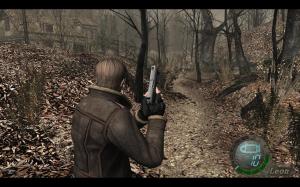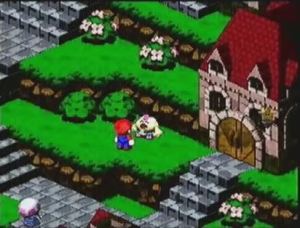Last week I discussed and explored some ideas about game endings, some of their controversies and some of what they should try to be. I mentioned how they carry a lot of weight for players and that botching an ending can be a truly disappointing experience for those deeply invested (financially or otherwise). I also mentioned that the ending carries a similar amount of weight to another significant part of the game: the beginning. Game beginnings are among my favorite parts of so many titles. Of all my favorite games that sit in my personal top ten, my favorite part of them is the opening few hours. And since no game is perfect, these games also contain flaws, and most of them tend to be contained near the ending. What goes wrong with games from the beginning to the end I think is something many games struggle to avoid.
The problem is so common because it is tied to the traditional game design template of a steadily increasing challenge. I suppose a game could be made where the challenge is the same throughout, or even gets easier, but the inherent test-like nature of most games requires that the player be pitted against increasingly powerful opposition. The end result usually has an impact on the visual design of the game, as well as the pacing. Many games start in a quiet or serene location and then ramp up and up into more hostile environments often portrayed as colorless and dreary. A very common trope is to end up in some kind of industrial location completely foreign to the rest of the game’s environments. To go back to one of my touchstones, the Resident Evil series has had this problem throughout its entire history.
The early segments of any RE game are often much more atmospheric than the machined, industrial look of the later stages. It seems apparent that when planning out the setting for the game, much more work went into the earlier segments than the later ones. Resident Evil 4 tries to make a big departure from its predecessors by eschewing the (oddly cramped) suburban locales for more natural forested areas. The enemies weren’t shambling zombies, but normal looking villagers. It gave RE4 a distinct look and feel. It all seemed much more old world, the enemies carried literally pitch forks and torches, old bell towers and chicken coups were a common sight. But farther into the game the setting was abandoned for the same old industrial and lab environments, the enemies now all had guns and body armor — it almost became a completely different game toward the end. The pacing went directly out the nearest window as enemies flooded every room and ammo was dumped on the player to accommodate that.
The issue of pacing is a tricky one to make declarations about, however. My favorite games all play with pacing in ways that make different parts of the game more distinct and memorable without alienating those parts from the rest of the game. While I may enjoy the pacing and environment of most game beginnings, I must admit that most games cannot simply maintain the exact same pace throughout the experience. The result is monotonous or, even worse, unrelenting. A sad case in point would be our current playthrough of Vagrant Story, which is ostensibly a dungeon crawler and as such the game does little to vary its content and pace. Every room is an encounter, one that demands full attention and use of the proper tools to handle the threats. The enemies in these rooms respawn upon reentry and the game requires some degree of backtracking. The experience puts the Crawl in Dungeon Crawler, which ultimately just leads to fatigue. Had the game included more in the way of towns or an overworld, the experience would probably have been more palatable. As it is, Vagrant Story is like shlurfing waist deep in mud for the entirety of the experience.
So the pacing should change throughout a game, I think that much I have clearly expressed. But this is something apart from abandoning the atmosphere of the beginning of the game. Peaceful-to-hostile is fine, but slow/calculating-to-guns blazing is problematic in my eyes. The plot might necessitate a confrontation with The Big Bad, but does Mr. Big Bad’s lair necessarily have to be crammed full of more than double the enemies from the rest of the game? I think the real challenge of design is to make the encounter more difficult while preserving the initial concept’s pace. This is apparently a challenge that most game designers are not always up to when they take the easier approach by simply moving all the slider bars to the right. It seems obvious at some point that far more concept art and the initial germ for the game’s creation all revolved around the opening, not the ending, of many high profile titles. It is just a shame that these elements get swallowed up by development costs and time limits that keep the ending of these games from being as smartly designed.
Now it is your turn, lazy eyed reader. Is this something familiar to you or not? Are there more game endings you enjoy than beginnings? Have you been a good boy or girl and kept up with the playthrough of Vagrant Story?! Confess now, my child, and I promise not to tell Fearless Leader of your transgressions.

